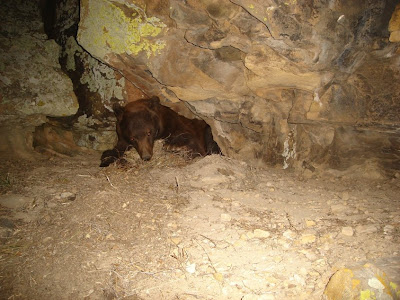
Question: How do you make it fun for kids to learn about ecology and modern technology, and develop respect for nature?
Answer: Give them lessons in camera trapping.
That's what’s happening at Afton-Lakeland Elementary School near Minnesota's twin cities.
Dawn Tanner is developing a trail camera curriculum there for school kids.
Dawn is a University of Minnesota PhD candidate. Her baptism in wildlife research was in the Galapagos Islands and Malaysian Borneo.
She loved fieldwork, but decided that she wanted to get elementary school kids turned on to science, biodiversity, and conservation.
And how did that happen?
Well, she got an NSF fellowship that sent graduate students in ecology and conservation biology to Minnesota's metropolitan schools. Their mission there was to work with the teachers to improve science lessons and incorporate science more broadly into the school curriculum.

Many Minnesota kids have formed positive attitudes about the environment by the time they reach the fifth grade.
"The kids' attitudes and their receptivity to environmentally responsible behavior is right on track. They score very high with respect to their attitudes about the environment, but they don't know what to do with it yet.”
"The problem is that city kids in particular are short on environmental experiences. The temptation to play with high tech toys in front of a TV screen is powerful. Enter trail cameras!"
Unlike many computer games that cultivate couch potatoes, trail cameras are an alternative "techie gadget" that is fun to use outdoors.
Trail cams can lure kids into the field, teach them how to monitor wildlife, and give them an exhilarating outdoor learning experience. They can even imbue them with a love of nature.

At the moment, Dawn is testing the curriculum.
The word is out and teachers are interested.
“Quite a number of teachers have contacted me already because they've heard about the testing we're doing at Afton-Lakeland Elementary. They want to get involved right now."
To date Dawn and the kids have photographed 12 species of mammals and birds.
"I'll monitor these two sites again this spring and add 2-3 new sites over the summer. We are aiming for about 140 trapnights per site".
"The folks at Cedar Creek Ecosystem Science Reserve have been so supportive to have me doing cameras there that they have volunteered to host a teacher training workshop in May, 2009."
"By summer we hope to have a web presence through the MN Project WILD website, so teachers can access data collected in protected areas around the state. This way they can compare monitoring results from their schoolyard with other areas."
The project has support from MN Project WILD, Gander Mountain, Stillwater Area School District, the Conservation Biology Program and the Bell Museum of Natural History (University of MN), MN DNR, and the MN Trappers Association.
If you are interested in the curriculum you can email Dawn at tann0042@umn.edu.


















































